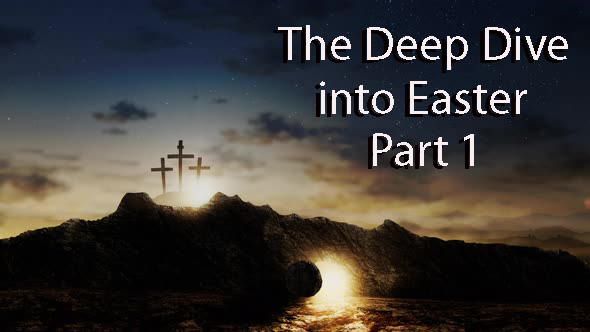The observance of Easter Sunday is a significant event within the Christian calendar, commemorating the resurrection of Jesus Christ from the dead. Unlike many holidays that occur on a fixed date, Easter is known for its enigmatic and shifting timeline, which intrigues believers and scholars alike. The variability of this sacred day invites contemplation and deep analysis, revealing the intertwining of ancient traditions, lunar calculations, and theological implications.
At the heart of determining when Easter is observed lies the Council of Nicaea, convened in 325 AD. This historic assembly sought to address various issues within Christianity, one of which was the uniformity of the Easter celebration. Prior to this council, Christians observed Easter on different dates, influenced by local customs and interpretations. Recognizing the need for a standardized approach, the council established that Easter would be celebrated on the first Sunday following the first full moon after the vernal equinox. This decision introduced a blend of solar and lunar calendars, reflecting the agricultural rhythm of the early Church and the Jewish calendar’s influence, as it was crucial for Christians to associate the resurrection with the Passover, which was also determined by lunar cycles.
The term “Paschal Full Moon” plays a pivotal role in understanding the timing of Easter. The Church recognized that Jesus’ crucifixion and resurrection occurred after the Jewish Passover, thus linking Easter to this significant Jewish feast. To determine Easter’s date, Christians rely on the Ecclesiastical approximation of the March equinox, which is set as March 21. This is not the astronomical equinox but a fixed date that the Church adopted. Consequently, Easter can fall anywhere between March 22 and April 25, weaving it into the fabric of the springtime renewal and the promise of new life. This alignment with the cycles of nature reflects an inherent understanding of the resurrection’s implications, resonating beautifully with themes of rebirth and restoration.
This calculation exemplifies a broader aspect of Christian theology that celebrates the interconnectedness of God’s creation and divine revelation. The vernal equinox signifies the arrival of spring, a season symbolic of hope and renewal, mirroring the Easter message of resurrection. Thus, the reasons for Easter’s date extend beyond mere calculation; they hint at a deeper narrative that echoes through Scripture and the tradition of faith. The resurrected Christ embodies not only spiritual renewal but also the recommencement of life in the natural world, reinforcing the theological position that the Creator actively participates in the cycles of creation.
One of the compelling features of Easter is the way its observance varies across different denominations and cultures. While the Western Christian tradition, including Roman Catholic and Protestant churches, adheres to the formula established by the Council of Nicaea, Eastern Orthodox Christians employ the Julian calendar to determine the date, resulting in different observances. This divergence arises from the recalibration of calendars over centuries, showcasing the rich tapestry of Christian history and the distinct theological emphases of each tradition. In some Eastern Orthodox communities, Easter can be celebrated as late as May, a solemn reminder of the varied paths of faith within the Christian community.
In addition to its calendrical determination, the observance of Easter is steeped in rich ritual and symbolism that speaks to a collective yearning for transcendence. The days leading up to Easter, known as Holy Week, are imbued with profound significance. Beginning with Palm Sunday, the faithful recall Jesus’ triumphant entry into Jerusalem, setting the stage for the events of the passion narrative. Maundy Thursday and Good Friday invite believers into deep reflection on the suffering and sacrifice of Christ, drawing them closer to the understanding of resurrection through the lens of suffering, elimination of sin, and reconciliation with God.
Consequently, the anticipation surrounding Easter reaches its zenith in the Easter Vigil, a jubilant service marking the transition from darkness to light. The lighting of the Paschal candle, the proclamation of the Resurrection, and the joyous singing of “Alleluia” herald the victory of life over death. Tradition encapsulates not only the chronological elements of Easter but also embodies the essence of human experience—joy intermingled with sorrow, darkness followed by light, and the perpetual cycle of death and resurrection. Each year, Christians participate in this timeless narrative, reflecting both the historical events of Christ’s life and the ongoing work of redemption in their lives.
Various cultural expressions further enrich the celebration of Easter, manifesting in unique customs and traditions worldwide. In some cultures, eggs symbolize new life and are decorated for festivities, representing the empty tomb from which Christ emerged victorious. Festivals, feasts, and gatherings foster community, reinforcement of faith, and reflection on the profound meaning of the resurrection. These customs, varying from place to place, offer a glimpse into how different communities perceive the manifestations of divine love and resurrection in their cultural contexts.
In summary, determining the date of Easter encompasses a complex interplay of historical, astronomical, and theological components. Rooted in the early Church’s efforts to unify observance, the calculation of Easter invites believers into a deeper understanding of resurrection, cyclical life, and divine connection. It unfolds not merely as a calendar event but as an embodiment of faith that beckons individuals to reflect on the transformative power of the resurrection in the entirety of their lives. Thus, the fascination with Easter is not merely about the date; it encompasses the richness of faith, history, and the inexorable march towards spiritual renewal and hope in the resurrection.



